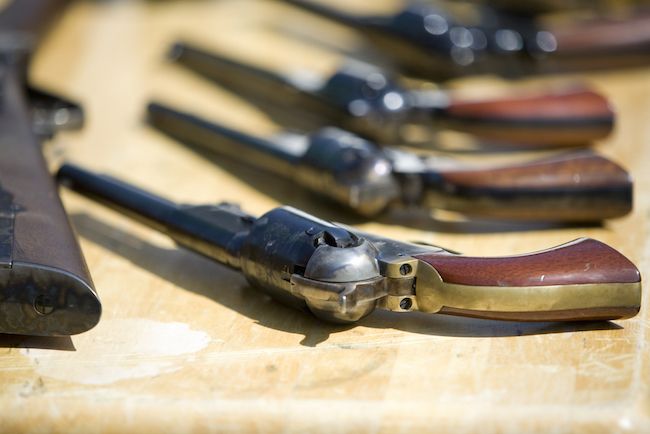Hatfields & McCoys Gather (Peacefully) to Unearth Relics at Last Battle Site

To learn more about a historical grudge, members of two formerly feuding families are (quite literally) digging up the past.
Those doing the excavating in Pike County, Kentucky, are the Hatfields and McCoys — two families that are infamous in the United States for their epic feud, which began around the time of the Civil War and ended in 1891 after several decades of violence that claimed at least a dozen lives. Back in 2003, members of both clans signed an official truce, and the families appear to get along just fine now.
In 2012, the Hatfields and McCoys were featured on National Geographic Channel's "Diggers," a show that follows two amateur relic hunters around the U.S. as they search for historical objects buried in the dirt. The episode about the historic feud was such a hit, that "Diggers" decided to come back to Tug Fork River Valley, the site of the former McCoy homestead. The second episode about the clans' history airs tonight (Aug. 10) at 10:30 p.m. ET. [Busted: 6 Civil War Myths]
The reason the dig centers on the McCoys' land is simple: That's where the most epic fight between the two families took place. The feud between the Hatfields and McCoys came to a head on New Year's night 1888, when members of the Hatfield clan set fire to Randolph McCoy's home, resulting in the death of two McCoys.
The charred remains of the former McCoy cabin, as well as the other relics from daily life at the time have remained on the site ever since. Many of these relics are now buried near the site of the decimated cabin, the precise location of which was determined in 2012 by archaeologists from the University of Kentucky Department of Anthropology’s Kentucky Archaeological Survey (KAS).
For the most recent episode of "Diggers" (taped in November 2014), members of both families — as well as the National Geographic team and archaeologists from KAS — met up again at the somber location to continue digging up the past.
"At first, it might seem like an unlikely partnership – amateurs and professionals ‒ but the thing that bonds us is how we love digging in the ground and coming up with priceless connections to our past," Kim McBride, co-director of KAS, said in a statement. "Discovering hold-in-your-hand proof, confirming fireside tales of generations: that’s exciting for professionals and amateurs alike. I also love to work with descendant communities; so Hatfields and McCoys together, preserving their history, was very special."
Sign up for the Live Science daily newsletter now
Get the world’s most fascinating discoveries delivered straight to your inbox.
The last time "Diggers" visited the McCoy homestead, the relic hunters unearthed musket balls and primitive bullets on the same hillside where the so-called New Year's night massacre of 1888 occurred. Also found on site were nails, ceramic shards, broken glass and dressed stone (stone that's been carved into a particular shape), all of which are typical findings on domestic sites from the mid- to late-19th century, according to McBride.
Bob Scott, a McCoy descendent who now owns the land on which the feud's most famous battle took place, said that he's excited about the new artifacts dug up last year.
"There are lessons to be learned here, lessons as valuable as they were in 1865 when the destruction of two families began. Before the Civil War, these two families had been close, the kind of close that grows between people who are isolated in the hills. Twenty-five years later, both families were mourning, scattered, dead or in jail. This family feud had no winner," Scott said in a statement.
With the exact site of the McCoy home now known and with interesting artifacts unearthed, there is even talk about the possibility of building a replica of the old house, or perhaps a museum where visitors can view the storied artifacts, according to KAS.
Follow Elizabeth Palermo @techEpalermo. Follow Live Science @livescience, Facebook & Google+. Original article on Live Science.

Elizabeth is a former Live Science associate editor and current director of audience development at the Chamber of Commerce. She graduated with a bachelor of arts degree from George Washington University. Elizabeth has traveled throughout the Americas, studying political systems and indigenous cultures and teaching English to students of all ages.











